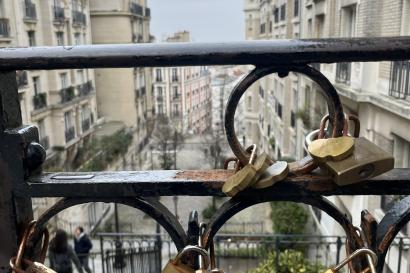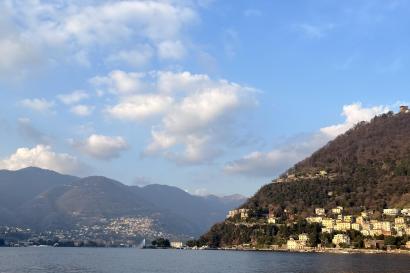The weekend before all IES Abroad classes commenced, every student in our program received the opportunity to travel to the Loire Valley, where the majority of France’s mesmerizing chateaus reside. This type of excursion is something I was looking forward to before I came to Paris. Although I love every aspect of this city, I wanted the opportunity to see other parts of France, and this short trip gave me that chance.
The journey began with a three-hour bus ride from Paris to lunch in the Loire Valley. I was truly impressed by the fact that even though this restaurant was in a tiny town, they still were able to produce a fantastic three-course meal. With our stomachs full, all of the students boarded the bus to head to our first chateau – Château Chenonceau. This is one of the most recognized chateaus in the world, and the water flowing under the majority of the castle is mesmerizing. One thing that immediately struck me was how isolated this castle is, even today. I thought this location would be right next to a large city, but the total opposite is true. I could not help but imagine how private this castle was when first constructed. While hundreds of people can easily recognize this giant manor in a photo, far less actually know who lived there. Before this trip, you could’ve added me to that list. I was shocked to find that several members of well-known nobility lived here, including Catherine de Medicis. This stood out to me the most because she is so infamous. Today, her portrait hangs over one of the fireplaces, and she is wearing all black. Once I discovered the many members that called Chenonceau home, the history of the chateau itself truly came to life, and my mind was filled with awe as I strolled through the same halls as Catherine de Medicis. I wonder what she would say if she saw the chateau today?
After a fantastic visit to Chenonceau, the entire group went to a wine cave to learn more about local wine culture. Our tour guide did a fantastic job explaining the purpose of wine caves. For example, the cave remains at the exact same temperature during the entire year. My fondest memory of this tour occurred when the manager compared a bottle of wine from 1947 to a very recent one. This allowed us to see the true affects of time, and it was caught in one bottle. After exploring the cave, the group gathered in a tasting room to try three different kinds of white wine. During a previous wine tasting event at the IES Abroad French Studies Center in Paris, we learned the four steps of observing and studying a wine, and this tasting in the Loire Valley was the perfect opportunity to put our new knowledge to the test. After a lovely tasting of wine and goat cheese, we departed for our hotel, where we had yet another fantastic dinner. Exhausted from a day full of activities, most students went to bed right after dinner.
The first stop on the list for a busy Friday was château du Clos Luce, which is best known for being Leonardo da Vinci’s home for the last three years of his life. Many of us students wondered how the famous Italian ended up in a small town in France, and we soon discovered that Francis I requested that Leonardo move to France towards the end of his life. During the reign of Francis I, France experienced the time of the Renaissance. The French discovered the great works and ideas of the Renaissance during a time of war in Italy, so the period started much later outside of the Italian peninsula. Once you see Clos Luce and its surrounding gardens, it is easy to understand why da Vinci would leave his nation for a foreign land. Although the house itself was not the largest in the area, the surrounding land, with a small body of water, was quite tranquil. I am certain Leonardo spent many sunny days wandering through his acres of land, creating marvelous inventions along the way.
The final castle of the trip was Château Royal d’Amboise, and this one was my personal favorite of the three. Unlike Château Chenonceau, Château Amboise is surrounded by a small town, with cafés and shops lining the narrow streets. The castle sits on a hill overlooking the town and the adjacent river, and all of the students were blown away by the views. One little known, but incredibly important fact about Château Amboise is the fact that Leonardo da Vinci’s gravesite rests in the castle’s walls. After da Vinci’s tomb was destroyed in Florence, his body was moved to its current location. Another of my favorite aspects about Château Amboise was the surrounding garden. With towering trees and small hills, my friends and I spent a large portion of the time just meandering along the several paths. Once our time at the chateau came to an end, it was time to head back to Paris.
The Loire Valley trip contained everything I wanted in a trip outside of Paris. This voyage let me see a side of France that I yearned to discover. Through local delicacies and guided tours, I found an ever-present side of France that is impossible to find in the capital.

Jonathan Skewes
<p>My name is Jonathan Skewes, and I am an advertising major at Pennsylvania State University. I have studied French for six years, and it is one of my true passions. I also enjoy playing soccer and discovering different cultures and countries.</p>







